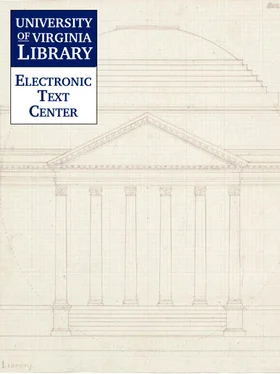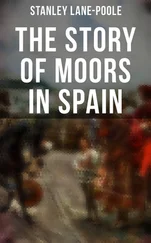Hendrik Loon - The Story of Mankind
Здесь есть возможность читать онлайн «Hendrik Loon - The Story of Mankind» весь текст электронной книги совершенно бесплатно (целиком полную версию без сокращений). В некоторых случаях можно слушать аудио, скачать через торрент в формате fb2 и присутствует краткое содержание. Год выпуска: 2000, Издательство: Electronic Text Center. University of Virginia Library., Жанр: Старинная литература, на английском языке. Описание произведения, (предисловие) а так же отзывы посетителей доступны на портале библиотеки ЛибКат.
- Название:The Story of Mankind
- Автор:
- Издательство:Electronic Text Center. University of Virginia Library.
- Жанр:
- Год:2000
- ISBN:нет данных
- Рейтинг книги:3 / 5. Голосов: 1
-
Избранное:Добавить в избранное
- Отзывы:
-
Ваша оценка:
- 60
- 1
- 2
- 3
- 4
- 5
The Story of Mankind: краткое содержание, описание и аннотация
Предлагаем к чтению аннотацию, описание, краткое содержание или предисловие (зависит от того, что написал сам автор книги «The Story of Mankind»). Если вы не нашли необходимую информацию о книге — напишите в комментариях, мы постараемся отыскать её.
The Story of Mankind — читать онлайн бесплатно полную книгу (весь текст) целиком
Ниже представлен текст книги, разбитый по страницам. Система сохранения места последней прочитанной страницы, позволяет с удобством читать онлайн бесплатно книгу «The Story of Mankind», без необходимости каждый раз заново искать на чём Вы остановились. Поставьте закладку, и сможете в любой момент перейти на страницу, на которой закончили чтение.
Интервал:
Закладка:
Compared to the problem of deciphering these nail-writings, the job of Champollion had been an easy one. The Egyptians used pictures. But the Sumerians, the earliest inhabitants of Mesopotamia, who had hit upon the idea of scratching their words in tablets of clay, had discarded pictures entirely and had evolved a system of V-shaped figures which showed little connection with the pictures out of which they had been developed. A few examples will show you what I mean. In the beginning a star, when drawn with a nail into a brick looked as follows: This sign however was too cumbersome and after a short while when the meaning of ``heaven'' was added to that of star the picture was simplified in this way which made it even more of a puzzle. In the same way an ox changed from into and a fish changed from into . The sun was originally a plain circle and became If we were using the Sumerian script today we would make an look like This system of writing down our ideas looks rather complicated but for more than thirty centuries it was used by the Sumerians and the Babylonians and the Assyrians and the Persians and all the different races which forced their way into the fertile valley.
The story of Mesopotamia is one of endless warfare and conquest. First the Sumerians came from the North. They were a white People who had lived in the mountains. They had been accustomed to worship their Gods on the tops of hills. After they had entered the plain they constructed artificial little hills on top of which they built their altars. They did not know how to build stairs and they therefore surrounded their towers with sloping galleries. Our engineers have borrowed this idea, as you may see in our big railroad stations where ascending galleries lead from one floor to another. We may have borrowed other ideas from the Sumerians but we do not know it. The Sumerians were entirely absorbed by those races that entered the fertile valley at a later date. Their towers however still stand amidst the ruins of Mesopotamia. The Jews saw them when they went into exile in the land of Babylon and they called them towers of Bab- Illi, or towers of Babel.
In the fortieth century before our era, the Sumerians had entered Mesopotamia. They were soon afterwards over-powered by the Akkadians, one of the many tribes from the desert of Arabia who speak a common dialect and who are known as the ``Semites,'' because in the olden days people believed them to be the direct descendants of Shem, one of the three sons of Noah. A thousand years later, the Akkadians were forced to submit to the rule of the Amorites, another Semitic desert tribe whose great King Hammurabi built himself a magnificent palace in the holy city of Babylon and who gave his people a set of laws which made the Babylonian state the best administered empire of the ancient world. Next the Hittites, whom you will also meet in the Old Testament, overran the Fertile Valley and destroyed whatever they could not carry away. They in turn were vanquished by the followers of the great desert God, Ashur, who called themselves Assyrians and who made the city of Nineveh the center of a vast and terrible empire which conquered all of western Asia and Egypt and gathered taxes from countless subject races until the end of the seventh century before the birth of Christ when the Chaldeans, also a Semitic tribe, re-established Babylon and made that city the most important capital of that day. Nebuchadnezzar, the best known of their Kings, encouraged the study of science, and our modern knowledge of astronomy and mathematics is all based upon certain first principles which were discovered by the Chaldeans. In the year 538 B.C. a crude tribe of Persian shepherds invaded this old land and overthrew the empire of the Chaldeans. Two hundred years later, they in turn were overthrown by Alexander the Great, who turned the Fertile Valley, the old melting-pot of so many Semitic races, into a Greek province. Next came the Romans and after the Romans, the Turks, and Mesopotamia, the second centre of the world's civilisation, became a vast wilderness where huge mounds of earth told a story of ancient glory.
MOSES
THE STORY OF MOSES, THE LEADER OF THE JEWISH PEOPLE
SOME time during the twentieth century before our era, a small and unimportant tribe of Semitic shepherds had left its old home, which was situated in the land of Ur on the mouth of the Euphrates, and had tried to find new pastures within the domain of the Kings of Babylonia. They had been driven away by the royal soldiers and they had moved westward looking for a little piece of unoccupied territory where they might set up their tents.
This tribe of shepherds was known as the Hebrews or, as we call them, the Jews. They had wandered far and wide, and after many years of dreary peregrinations they had been given shelter in Egypt. For more than five centuries they had dwelt among the Egyptians and when their adopted country had been overrun by the Hyksos marauders (as I told you in the story of Egypt) they had managed to make themselves useful to the foreign invader and had been left in the undisturbed possession of their grazing fields. But after a long war of independence the Egyptians had driven the Hyksos out of the valley of the Nile and then the Jews had come upon evil times for they had been degraded to the rank of common slaves and they had been forced to work on the royal roads and on the Pyramids. And as the frontiers were guarded by the Egyptian soldiers it had been impossible for the Jews to escape.
After many years of suffering they were saved from their miserable fate by a young Jew, called Moses, who for a long time had dwelt in the desert and there had learned to appreciate the simple virtues of his earliest ancestors, who had kept away from cities and city-life and had refused to let themselves be corrupted by the ease and the luxury of a foreign civilisation.
Moses decided to bring his people back to a love of the ways of the patriarchs. He succeeded in evading the Egyptian troops that were sent after him and led his fellow tribesmen into the heart of the plain at the foot of Mount Sinai. During his long and lonely life in the desert, he had learned to revere the strength of the great God of the Thunder and the Storm, who ruled the high heavens and upon whom the shepherds depended for life and light and breath. This God, one of the many divinities who were widely worshipped in western Asia, was called Jehovah, and through the teaching of Moses, he became the sole Master of the Hebrew race.
One day, Moses disappeared from the camp of the Jews. It was whispered that he had gone away carrying two tablets of rough-hewn stone. That afternoon, the top of the mountain was lost to sight. The darkness of a terrible storm hid it from the eye of man. But when Moses returned, behold! there stood engraved upon the tablets the words which Jehovah had spoken unto the people of Israel amidst the crash of his thunder and the blinding flashes of his lightning. And from that moment, Jehovah was recognised by all the Jews as the Highest Master of their Fate, the only True God, who had taught them how to live holy lives when he bade them to follow the wise lessons of his Ten Commandments.
They followed Moses when he bade them continue their journey through the desert. They obeyed him when he told them what to eat and drink and what to avoid that they might keep well in the hot climate. And finally after many years of wandering they came to a land which seemed pleasant and prosperous. It was called Palestine, which means the country of the ``Pilistu'' the Philistines, a small tribe of Cretans who had settled along the coast after they had been driven away from their own island. Unfortunately, the mainland, Palestine, was already inhabited by another Semitic race, called the Canaanites. But the Jews forced their way into the valleys and built themselves cities and constructed a mighty temple in a town which they named Jerusalem, the Home of Peace.
Читать дальшеИнтервал:
Закладка:
Похожие книги на «The Story of Mankind»
Представляем Вашему вниманию похожие книги на «The Story of Mankind» списком для выбора. Мы отобрали схожую по названию и смыслу литературу в надежде предоставить читателям больше вариантов отыскать новые, интересные, ещё непрочитанные произведения.
Обсуждение, отзывы о книге «The Story of Mankind» и просто собственные мнения читателей. Оставьте ваши комментарии, напишите, что Вы думаете о произведении, его смысле или главных героях. Укажите что конкретно понравилось, а что нет, и почему Вы так считаете.












